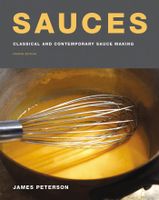Advertisement
Champagne
Published 1991
Authentic Champagne comes from a closely delineated region of northern France whose soil imparts a characteristic steely/chalky flavor to the wine. Still Champagne is converted to the sparkling variety using an involved traditional process (méthode champenoise). Don’t bother using other sparkling wines such as prosecco or most cavas because they leave little character in the sauce.
Those who write recipes using Champagne often naively assume that the flavor and elegance of Champagne are somehow going to work their way into a cooked preparation. Cooking will immediately destroy the natural carbonation that has required so much time and expense, and it will destroy much of the natural finesse of the wine as well. Many chefs, when confronted with one of these recipes, are horrified at the idea of opening an expensive bottle of Champagne and will substitute a less-expensive sparkling wine. This makes no sense, because the bubbles will be lost and only the basic flavors of the wine will remain. It is far more logical to substitute a still Champagne (Coteaux Champenois), which will have the same basic flavors as sparkling Champagne minus the yeastiness and some complexity. Although these wines are never cheap, they are usually half the price of the sparkling variety.


